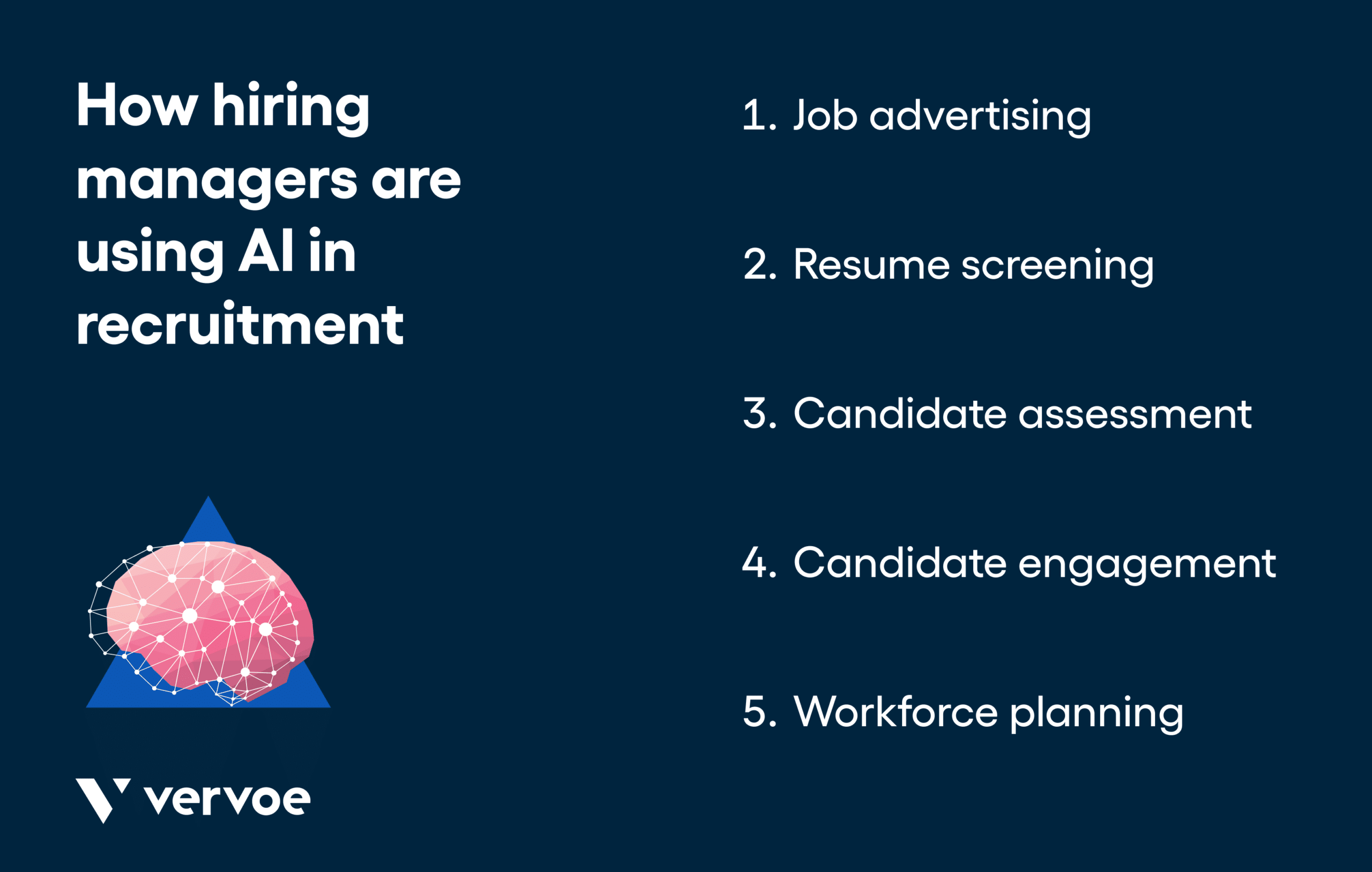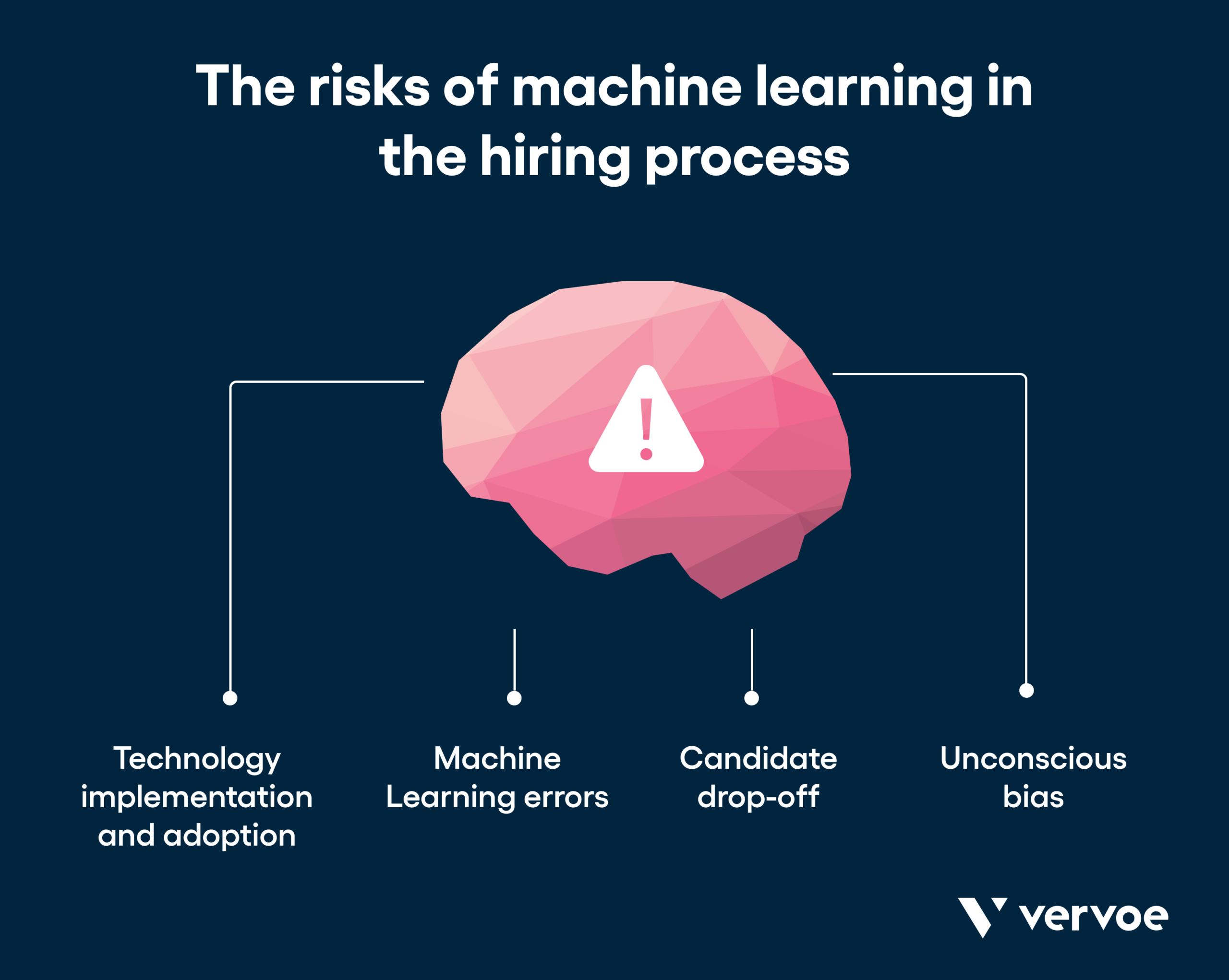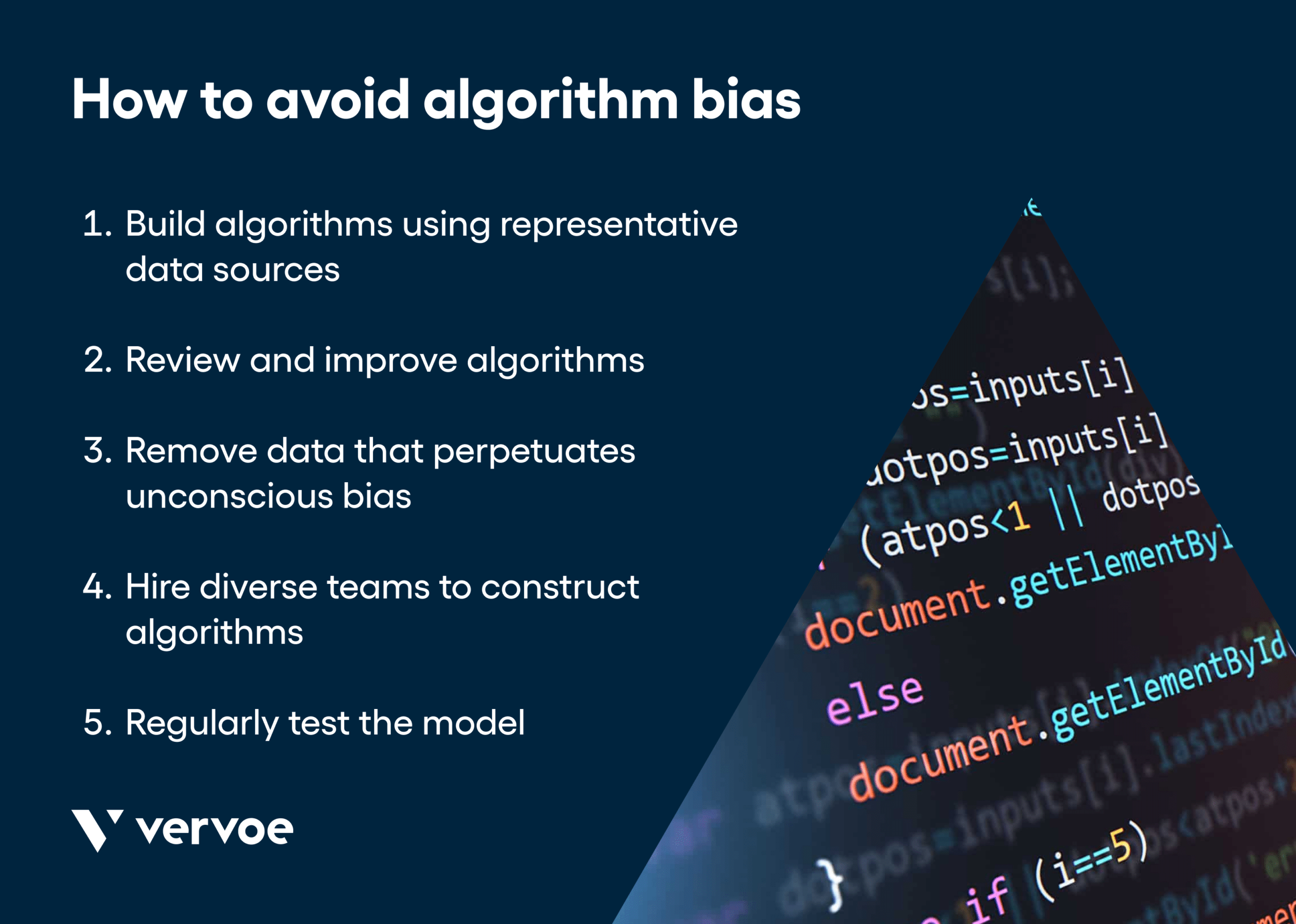Machine learning technology has numerous applications in recruitment, whether it’s targeted job adverts, candidate resume screening or workforce succession planning. But the technology is not without its challenges.
In this piece, we’ll outline how machine learning is being used in talent acquisition, the benefits it promises and how organizations can mitigate against the associated risks.
What is machine learning?
Put simply: machine learning is a form of artificial intelligence (AI) that sees computer algorithms learn to make predictions and draw connections from vast amounts of data at high speed.
Machine learning solutions, which include data mining, robotic process automation and natural language processing, do not require specific programming. Rather, the machines are fed good quality, clean data which enables an automated learning process.
Today, AI and machine learning are driving efficiencies in the workplace across multiple industries, automating many of the time-consuming tasks that once required human labor. In recruitment, the applications of the technology are wide-reaching.
How are hiring managers already using machine learning in recruitment?
In an increasingly connected and digitized world, recruitment teams have access to vast amounts of valuable candidate data. But the act of collecting, collating, and analyzing this information to enable informed recruitment decisions is easier said than done.
Talent acquisition teams simply don’t have the time or resources to carefully review each candidate’s resume, target passive job candidates, or tailor job descriptions.
But that’s where machine learning comes in. With this technology, many of the manual and repetitive recruitment operations can be automated, leaving time for recruitment professionals to focus on more strategic, value-adding tasks.
Here are a few ways machine learning technology is being used in the talent acquisition process today…
1. Job advertising
Machine learning can assist recruitment teams in the analyzing, writing, and placing of job advertisements. For example, tools can determine why certain listings perform better than others or advise hiring organizations on how to optimize descriptions to attract diverse candidates.
Furthermore, the technology can be used to identify qualified candidates so they can be targeted via various marketing channels, whether it be on social media sites or job boards.
2. Resume screening
The process of manually screening candidate resumes is time-consuming and ineffective. Recruitment teams are unlikely to give equal attention to each resume they review and it’s all too easy for unconscious biases to creep in.
CV-screening tools can quickly filter thousands of applications to shortlist candidates with the required skills and experience.
3. Candidate assessment
Candidate pre-selection tools use machine learning algorithms and applicant data to assess candidates in the talent pool to determine whether they possess the soft skills, aptitude, and core values to succeed in a role.
These solutions help hiring organizations quickly identify high-potential applicants and rank candidates accordingly.
4. Candidate engagement
In the hunt for top talent, hiring organizations must treat candidates like customers. This requires the provision of a seamless and efficient talent acquisition process.
Candidate relationship management tools serve to guide and inform applicants every step of the way, whether it’s the automated scheduling of interviews and assessments or 24/7 helplines to answer queries and concerns.
5. Workforce planning
Amid the great resignation and shifting worker priorities, many organizations are concerned about growing skills gaps and succession planning. As well as predicting hiring needs, machine learning tools can help analyze existing workforces and calculate important metrics such as cost-to-hire or time-to-productivity.
What are the benefits and risks of AI and machine learning in the recruitment process?
As with any new technology, there is a range of benefits and risks associated with machine learning in the recruiting process:
The benefits of machine learning during the hiring process
There are lots of benefits to using machine learning in recruitment including…
1. Effective candidate sourcing
For starters, companies are leveraging these technologies to identify the best candidates from large candidate pools. Without the assistance of machine learning tools, top talent can be easily overlooked and the likelihood of making bad hiring choices increases.
2. Recruitment accuracy
Machine learning tools promise higher levels of recruitment accuracy thanks to their use of objective data and the elimination of human error.
3. Recruitment efficiency
Machine learning promises to accelerate every stage of the recruitment cycle, quickly writing job descriptions, screening resumes, assessing candidates, scheduling assessments and interviews, and making informed hiring decisions.
4. Diversity and inclusion
When used effectively, machine learning promises to advance diversity and inclusion initiatives during the recruitment process. Instances of unconscious bias are reduced and applicants have an equal chance at success.
The risks associated with machine learning during the hiring process
If carefully implemented and closely monitored, machine learning has the power to radically transform recruitment processes. But there are a couple of important factors to be wary of…
1. Technology implementation and adoption
As with the implementation of any new technology, a few teething problems can be expected. Organizations must take the time to choose an appropriate tool, determine how it can best support their recruitment practices, and invest the time and resources to educate and train the workers who will be using it.
2. Machine Learning errors
No tool can be 100% accurate, which means perfectly qualified candidates could be eliminated too early in the recruitment process. Hiring organizations must weigh up the pros and cons of using machine learning tools, allow room for error, and maintain some level of human input to reduce the likelihood of missing out on top talent.
3. Candidate drop-off
Machine learning tools drive many efficiencies during the hiring process and, in some cases, enhance the candidate experience. However, when it comes to managing candidates, it’s important to strike a balance between deploying AI tools and falling back on good old-fashioned human interaction. A candidate may become frustrated or lose interest in the application process if communication is reduced to interactions with a chatbot.
4. Unconscious bias
Most importantly, it’s vital to remember that machine learning tools are equally likely to exhibit unconscious biases as the humans who created them. Hiring organizations must educate themselves about the impacts of algorithm bias and take steps to eliminate it to ensure their recruitment processes are fair.
What is algorithmic bias?
Algorithmic bias in hiring sees a machine learning system make systematic and repeated errors that create unfair or discriminatory outcomes. The resulting impact of this is that certain groups of people, often those from marginalized communities, are disadvantaged during the recruitment process.
It might be that an algorithm learns to discriminate against women or ethnic minorities during candidate screening, shortlist resumes with English-sounding names, or target male candidates with high-paying executive roles.
In 2018, for example, Amazon had to retire an artificial intelligence (AI) recruiting tool that showed a bias against women. The tool ultimately taught itself that male candidates were more desirable than female ones and began penalizing resumes that included the word “women’s”.
Research has shown that, in mimicking human decision-making, algorithms will replicate existing real-world biases. After all, machine learning algorithms often learn what hiring success looks like from historical recruitment data, which is steeped in bias and discrimination.
One study found that ads on Facebook for supermarket cashier positions were shown to an audience of 85% women while roles at taxi companies were targeted at a 75% Black audience.
How to avoid algorithm bias
There are several ways to address and prevent algorithm bias within your organization…
1. Build algorithms using representative data sources
If an algorithm is fed with historical recruitment data, it will quickly adopt a company’s unconscious biases and discriminatory practices.
If 80% of a company’s leadership team are white and male, for example, the algorithm might unintentionally favor candidates of the same gender and race.
Instead, hiring organizations should endeavor to provide balanced and clean data sources and focus on implementing objective and controllable recruitment processes, such as candidate pre-selection assessments.
2. Review and improve algorithms
A fundamental characteristic of machine learning tools is that the algorithms can continually learn and improve. This means that errors can be addressed and ironed out and instances of algorithm bias can be reduced.
As organizations look to select suitable tools, it’s worth considering vendors that monitor performance and commit to consistently improving algorithms.
3. Remove data that perpetuates unconscious bias
Because unconscious biases held by a recruiter or hiring manager can so easily be passed onto machine learning tools, it’s worth removing irrelevant data from resumes and application forms.
Algorithms do not need information such as names, addresses, date of birth or geographical location.
4. Hire diverse teams to construct algorithms
Diverse teams are far less likely to develop machine learning tools that perpetuate discriminatory hiring practices.
These teams should be composed of both technical experts and behavioral psychologists who can readily identify the types of biases that are likely to infiltrate tools and the most important factors to take into consideration.
5. Regularly test the model
Organizations must confirm the technology is performing the job it’s supposed to do. Alongside driving efficiencies, reducing time-to-hire, and improving the candidate experience, is the algorithm advancing diversity and inclusion initiatives?
Conclusion
Machine learning has come a long way in recent years and promises numerous benefits for the recruitment industry.
While the technology will likely evolve and present many more opportunities, hiring organizations must be mindful to address algorithm bias and continually review their tools to ensure a fair and effective recruitment process for all.

























